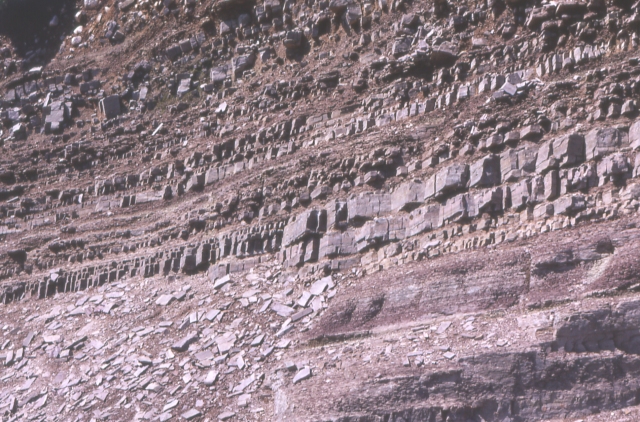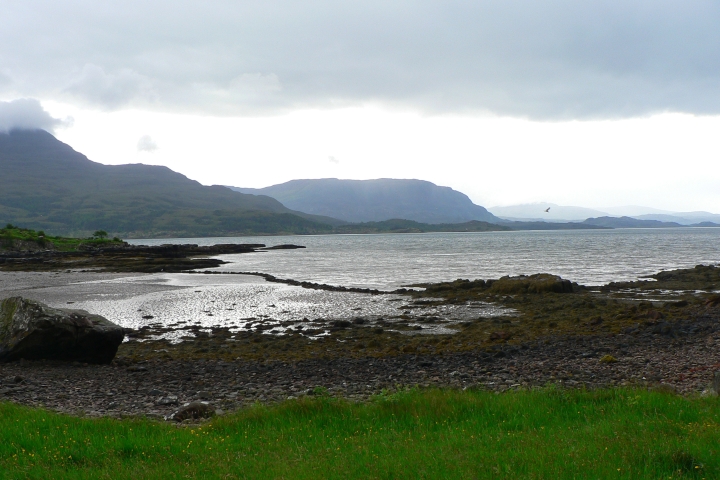|
Bicellum Brasieri
''Bicellum brasieri'' is a fossil holozoan. It is about 1 billion years old and could be the oldest example of complex multicellularity in the evolutionary lineage leading to the animals. It was discovered in 2021, and is named posthumously after the late palaeontologist Martin Brasier, who was a co-author of the paper that first described it. Fossil site ''Bicellum'' was found in sediments from the Torridon Group#Diabaig Formation, Diabaig Formation in Loch Torridon, Scotland. The Diabaig Formation, considered to represent an ancient lake deposit, was already known to preserve the first non-marine eukaryotes. References {{Taxonbar, from=Q106730787 Holozoa Fossils of Scotland Protists described in 2021 Fossil taxa described in 2021 ... [...More Info...] [...Related Items...] OR: [Wikipedia] [Google] [Baidu] |
Holozoa
Holozoa is a group of organisms that includes animals and their closest single-celled relatives, but excludes fungi. ''Holozoa'' is also an old name for the tunicate genus ''Distaplia''.'' Because Holozoa is a clade including all organisms more closely related to animals than to fungi, some authors prefer it to recognizing paraphyletic groups that mostly consists of Holozoa minus animals. Perhaps the best-known holozoans, apart from animals, are the choanoflagellates, which strongly resemble the collar cells of sponges, and so were theorized to be related to sponges even in the 19th century. ''Proterospongia'' is an example of a colonial choanoflagellate that may shed light on the origin of sponges. The affinities of the other single-celled holozoans only began to be recognized in the 1990s. The sub-classification Ichthyosporea or Mesomycetozoea contains a number of mostly parasitic species. The amoeboid genera ''Ministeria'' and ''Capsaspora'' may be united in a group call ... [...More Info...] [...Related Items...] OR: [Wikipedia] [Google] [Baidu] |
Martin Brasier
Martin David Brasier FGS, FLS (12 April 1947 – 16 December 2014) was an English palaeobiologist and astrobiologist known for his conceptual analysis of microfossils and evolution in the Precambrian and Cambrian. He was Professor of Palaeobiology at the University of Oxford and Emeritus Fellow of St Edmund Hall. His research critically examined the context and character of the early fossil record, making use of field mapping, logging, optical petrography, stable isotope geochemistry, confocal microscopy, NanoSims microprobes, and lasers for high resolution 3D scanning and laser Raman spectroscopy. Brasier died in a car accident near Burford, Oxfordshire, UK, on 16 December 2014. Contributions His contributions include the Brasier–Schopf debate on critical testing of questionable 3460 Ma Apex chert 'microfossils' at NASA; work on the earliest well-preserved fossils of cells (biology) (3430 Ma Strelley Pool); the pumice hypothesis for the origins of life; mapping the ... [...More Info...] [...Related Items...] OR: [Wikipedia] [Google] [Baidu] |
Torridon Group
In geology, the term Torridonian is the informal name for the Torridonian Group, a series of Mesoproterozoic to Neoproterozoic arenaceous and argillaceous sedimentary rocks, which occur extensively in the Northwest Highlands of Scotland. The strata of the Torridonian Group are particularly well exposed in the district of upper Loch Torridon, a circumstance which suggested the name Torridon Sandstone, first applied to these rocks by James Nicol. Stratigraphically, they lie unconformably on gneisses of the Lewisian complex and their outcrop extent is restricted to the Hebridean Terrane. Rock type The rocks are mainly red and brown sandstones, arkoses and shales with coarse conglomerates locally at the base. Some of the materials of these rocks were derived from the underlying Lewisian gneiss, upon the uneven surface of which they rest, but the bulk of the material was obtained from rocks that are nowhere now exposed. Upon this ancient denuded land surface the Torridonian s ... [...More Info...] [...Related Items...] OR: [Wikipedia] [Google] [Baidu] |
Loch Torridon
Loch Torridon ( gd, Loch Thoirbheartan) is a sea loch on the west coast of Scotland in the Northwest Highlands. The loch was created by glacial processes and is in total around 15 miles (25 km) long. It has two sections: Upper Loch Torridon to landward, east of Rubha na h-Airde Ghlaise, at which point it joins Loch Sheildaig; and the main western section of Loch Torridon proper. Loch a' Chracaich and Loch Beag are small inlets on the southern shores of the outer Loch, which joins the Inner Sound between the headlands of Rubha na Fearna to the south and Red Point to the north. The name ''Thoirbhearta'' has a similar root to '' Tarbert'' and indicates a place where boats were dragged overland. Islands The islets in the loch include: * in Loch Shieldaig: Eilean an Inbhire Bhàin, Eilean Dùghaill and Shieldaig Island. * in Upper Loch Torridon: Eilean à Chaoil, Eilean Cnapach, both of which are tidal. * in outer Loch Torridon: Eilean Mòr, Eilean Tioram, Sgeir Ghlas, ... [...More Info...] [...Related Items...] OR: [Wikipedia] [Google] [Baidu] |
Eukaryote
Eukaryotes () are organisms whose cells have a nucleus. All animals, plants, fungi, and many unicellular organisms, are Eukaryotes. They belong to the group of organisms Eukaryota or Eukarya, which is one of the three domains of life. Bacteria and Archaea (both prokaryotes) make up the other two domains. The eukaryotes are usually now regarded as having emerged in the Archaea or as a sister of the Asgard archaea. This implies that there are only two domains of life, Bacteria and Archaea, with eukaryotes incorporated among archaea. Eukaryotes represent a small minority of the number of organisms, but, due to their generally much larger size, their collective global biomass is estimated to be about equal to that of prokaryotes. Eukaryotes emerged approximately 2.3–1.8 billion years ago, during the Proterozoic eon, likely as flagellated phagotrophs. Their name comes from the Greek εὖ (''eu'', "well" or "good") and κάρυον (''karyon'', "nut" or "kernel"). Euka ... [...More Info...] [...Related Items...] OR: [Wikipedia] [Google] [Baidu] |
Holozoa
Holozoa is a group of organisms that includes animals and their closest single-celled relatives, but excludes fungi. ''Holozoa'' is also an old name for the tunicate genus ''Distaplia''.'' Because Holozoa is a clade including all organisms more closely related to animals than to fungi, some authors prefer it to recognizing paraphyletic groups that mostly consists of Holozoa minus animals. Perhaps the best-known holozoans, apart from animals, are the choanoflagellates, which strongly resemble the collar cells of sponges, and so were theorized to be related to sponges even in the 19th century. ''Proterospongia'' is an example of a colonial choanoflagellate that may shed light on the origin of sponges. The affinities of the other single-celled holozoans only began to be recognized in the 1990s. The sub-classification Ichthyosporea or Mesomycetozoea contains a number of mostly parasitic species. The amoeboid genera ''Ministeria'' and ''Capsaspora'' may be united in a group call ... [...More Info...] [...Related Items...] OR: [Wikipedia] [Google] [Baidu] |
Fossils Of Scotland
A fossil (from Classical Latin , ) is any preserved remains, impression, or trace of any once-living thing from a past geological age. Examples include bones, shells, exoskeletons, stone imprints of animals or microbes, objects preserved in amber, hair, petrified wood and DNA remnants. The totality of fossils is known as the ''fossil record''. Paleontology is the study of fossils: their age, method of formation, and evolutionary significance. Specimens are usually considered to be fossils if they are over 10,000 years old. The oldest fossils are around 3.48 billion years old to 4.1 billion years old. Early edition, published online before print. The observation in the 19th century that certain fossils were associated with certain rock strata led to the recognition of a geological timescale and the relative ages of different fossils. The development of radiometric dating techniques in the early 20th century allowed scientists to quantitatively measure the absolute ... [...More Info...] [...Related Items...] OR: [Wikipedia] [Google] [Baidu] |
Protists Described In 2021
A protist () is any eukaryotic organism (that is, an organism whose cells contain a cell nucleus) that is not an animal, plant, or fungus. While it is likely that protists share a common ancestor (the last eukaryotic common ancestor), the exclusion of other eukaryotes means that protists do not form a natural group, or clade. Therefore, some protists may be more closely related to animals, plants, or fungi than they are to other protists. However, like the groups ''algae'', ''invertebrates'', and ''protozoans'', the biological category ''protist'' is used for convenience. Others classify any unicellular eukaryotic microorganism as a protist. The study of protists is termed protistology. History The classification of a third kingdom separate from animals and plants was first proposed by John Hogg in 1860 as the kingdom Protoctista; in 1866 Ernst Haeckel also proposed a third kingdom Protista as "the kingdom of primitive forms". Originally these also included prokaryotes, but wi ... [...More Info...] [...Related Items...] OR: [Wikipedia] [Google] [Baidu] |





